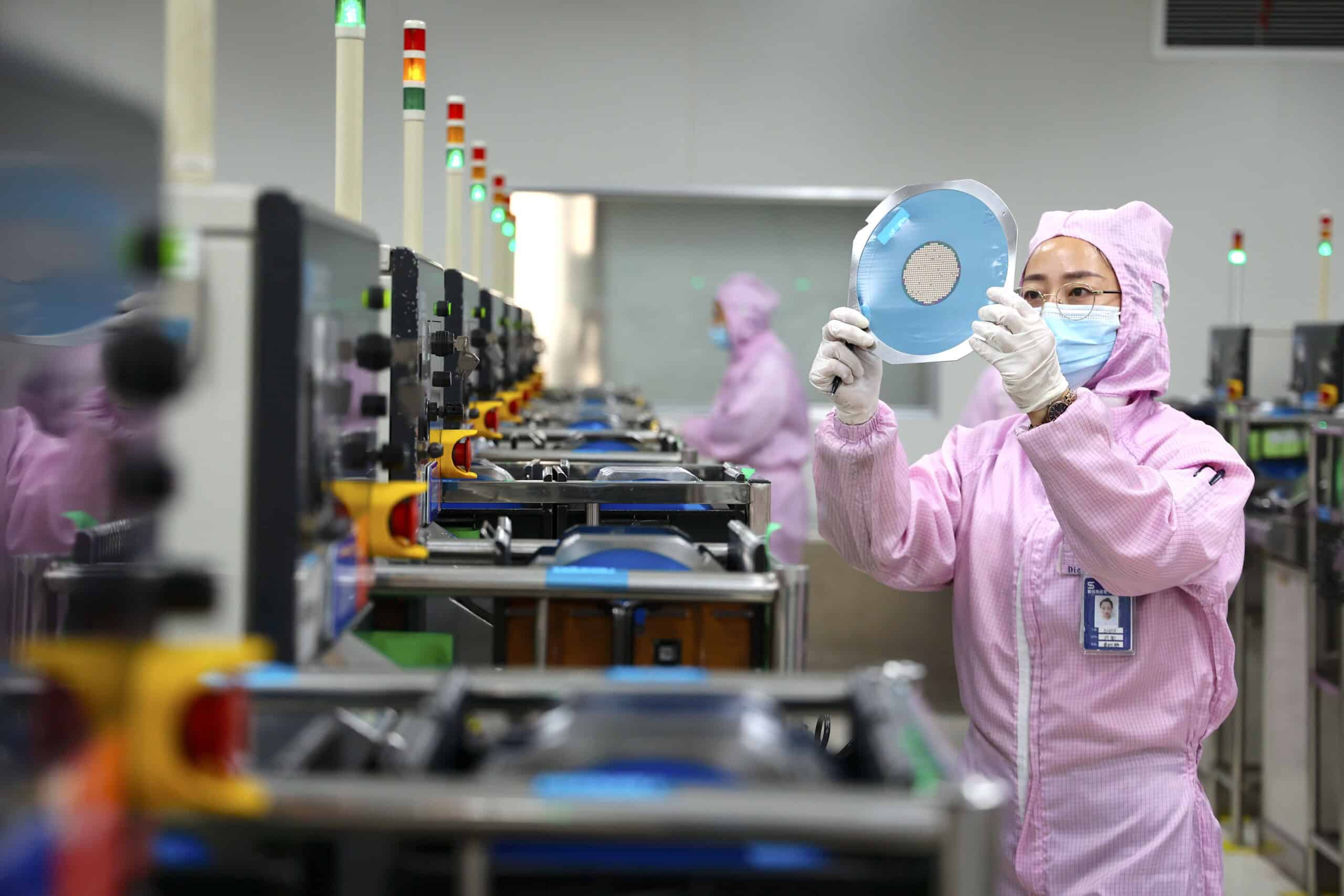
Since 2022, the U.S. has allocated tens of billions of dollars towards bringing more semiconductor production to its own shores. But as the U.S. zones in on the high end of the market, a new set of questions has arisen: is China poised to become a global hub for older, less advanced “legacy” semiconductors — and if so, how much does this matter?
TOPPING THE SECOND-TIER
According to research by Boston Consulting Group and the Semiconductor Industry Association (SIA), the U.S. will be producing nearly 30 percent of the world’s most advanced chips by 2032, up from zero currently (advanced chips are smaller than 10 nanometers, the metric used to measure chip size). This ramp-up will increase overall American chipmaking capacity faster than any other nation over the medium-term.

Meanwhile, China has been building up its ability to produce more “legacy” chips that are still essential in products from cars to smartphones, even though profit margins for fabs producing legacy chips are much thinner than for those advanced chips.
“In your smartphone, depending on the type, [there] are around 20 to 40 chips. The majority of those would actually be considered mature semiconductors,” says Jan-Peter Kleinhans, head of the Global Chip Dynamics team at Stiftung Neue Verantwortung (SNV), a German think tank.
“Everyone’s talking about the three-nanometer Apple chip in the newest iPhone, and this chip is critical to that iPhone. But just as critical are the power semiconductors that allow you to charge your iPhone within 20 minutes,” Kleinhans adds.

For Chinese semiconductor fabs, the trend towards legacy chips gathered pace after increasingly onerous U.S. export controls on advanced chips from 2022 onwards.
“If you pile on all these controls around advanced semiconductors, where are Chinese foundries and IDMs [integrated device manufacturers] naturally going to be spending their focus?” says Reva Goujon, director at research firm Rhodium Group. “Naturally you would see a drift towards mature node semiconductors because that’s where they still have the equipment [and] the technology to produce those chips at scale.”
In this bracket of 28-65 nanometers, China is building out 2.7 million wafers per month if all the fabs are coming online that have been announced. This is more than twice as much as the entire rest of the world combined in announced capacity.
Jan-Peter Kleinhans, head of the Global Chip Dynamics team at German think tank Stiftung Neue Verantwortung (SNV)
Chinese chipmakers, including Semiconductor Manufacturing International Corporation (SMIC), Hua Hong, and Nexchip, have been luring customers away from the likes of the U.S.’s GlobalFoundries and Korea’s Samsung by promising lower prices, according to a January report by semiconductor consulting firm JW Insights. China’s ramp-up of legacy chip production is still primarily serving the country’s domestic market, but companies could increase their volume of exports longer term.
“The Chinese ecosystem is derisking by looking for domestic suppliers, because foreign suppliers come increasingly with a geopolitical risk. If you depend on foreign suppliers, you could be impacted by the next export control,” says Kleinhans from SNV.

China’s National Integrated Circuits Industry Development Investment Fund has raised $52 billion in support of semiconductor fabrication and design since 2014, with a particular focus on older chips, according to the SIA report. The fund aims to raise an additional $40 billion by the end of the decade.
“The fact is, even Europe, Japan and the U.S. together do not come close to the legacy chip capacity build-out that we see happening in China,” says Kleinhans. “In this bracket of 28-65 nanometers, China is building out 2.7 million wafers per month if all the fabs are coming online that have been announced. This is more than twice as much as the entire rest of the world combined in announced capacity.”
As China tightens its grip on this market, the concern for the U.S. is becoming overly dependent on its supply. In January, the Commerce Department began to survey U.S. companies on where their legacy chips are sourced.
“They [legacy chips] are in all kinds of defense applications and medical devices,” says Goujon from Rhodium Group. “This very quickly translates into a concern that U.S. needs to restrict sourcing mature node chips from China, or else Beijing is going to rapidly build out its production capacity: And that could then be used as coercive leverage.”

Aaron Mc Nicholas is a staff writer at The Wire based in Washington DC. He was previously based in Hong Kong, where he worked at Bloomberg and at Storyful, a news agency dedicated to verifying newsworthy social media content. He earned a Master of Arts in Asian Studies at Georgetown University and a Bachelor of Arts in Journalism from Dublin City University in Ireland.




